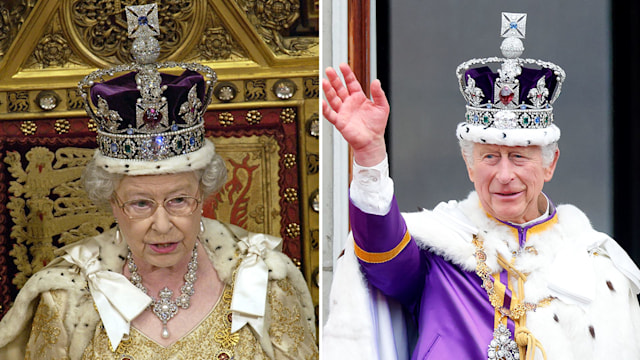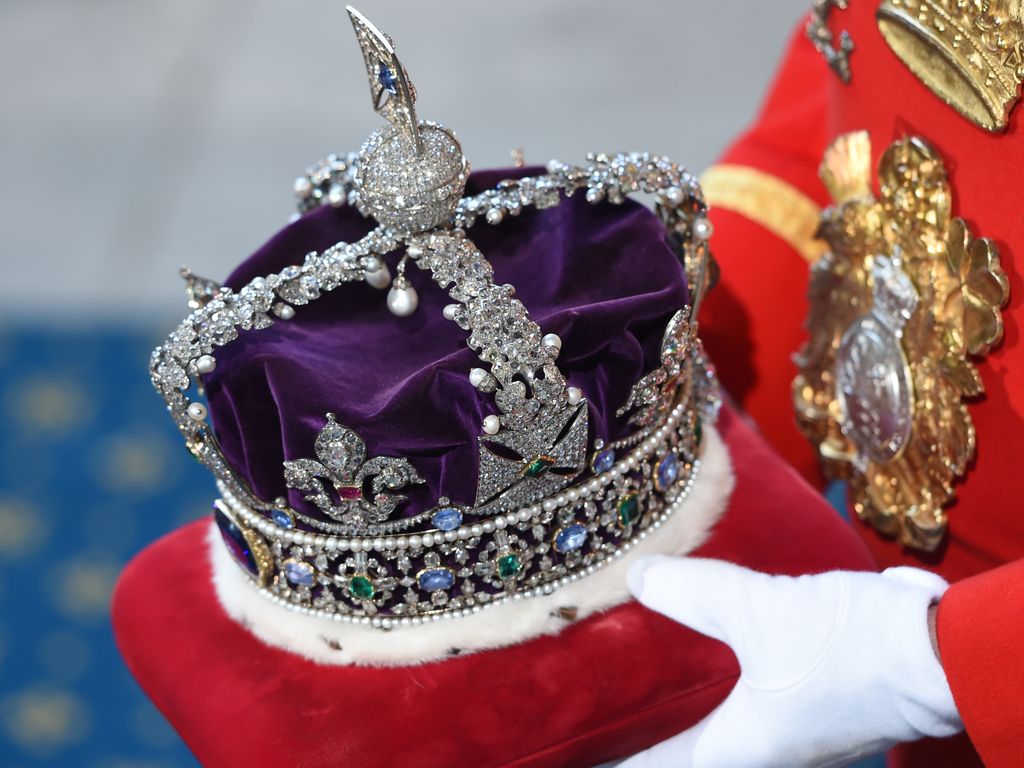The Imperial State Crown, which is kept in the Jewel House at the Tower of London, is one of the most treasured and iconic symbols of the British monarchy. The Imperial State Crown is only worn on special occasions, such as the State Opening of Parliament. During the procession to the House of Lords, the crown is carried in front of the monarch, and it is placed on a cushion next to the throne during the speech.
From the stunning jewels to the family connections, here is everything you need to know about this magnificent crown...
The jewels explained
Designed for the coronation of King George VI in 1937, the Imperial State Crown is made of gold and is set with over 3,000 diamonds. The Imperial State Crown was created in 1937 for the coronation of King George VI, but it is based on earlier crowns that date back to the 17th century. It has been worn by every British monarch since then, including the late Queen Elizabeth II.
Made of gold and set with over 3,000 diamonds, including the famous Cullinan II diamond, which weighs 317 carats, the royal regalia is a sight to behold. It also features other precious stones such as sapphires, emeralds, and rubies, and is adorned with symbols that represent the monarchy, such as a cross and a fleur-de-lis.
Despite its beauty, the headpiece weighs more than 1kg. In the BBC documentary The Coronation in 2018, the late Queen spoke about what it was like to wear the crown and other heavy jewels, saying: "You can't look down to read the speech, you have to take the speech up, because if you did, your neck would break, it would fall off. So there are some disadvantages to crowns, but otherwise they're quite important things."
One of the most significant symbols of the Imperial State Crown is the St. Edward's Crown, which is mounted on the top of the crown. It represents the ultimate symbol of monarchy and is only worn by the monarch during their coronation. The cross on the crown represents the Christian faith, while the fleur-de-lis symbolizes the French influence on British history.
Estimated worth
The Imperial State Crown is considered to be one of the most valuable objects in the British royal collection, with an estimated value of up to £5 billion; the the 317-carat Cullinan II diamond at the crown's centre has been estimated at around £400 million alone. However, the crown is considered to be priceless due to its historical and cultural significance.
On Queen Elizabeth's coffin
During the Queen's funeral, the crown was placed on top of her oak, lead-lined coffin during her lying-in-state and the state funeral. Ahead of the late monarch's burial, the crown jeweller removed the crown, alongside the Sovereign's Orb and Sceptre. All three of these items symbolise the monarch's power, and so are removed following their death.
READ: What will happen to the Queen's precious jewels?
MORE: All you need to know about St Edward's Crown
King Charles' coronation
The Crown played a key part in the coronation of King Charles III, with the monarch wearing the majestic piece for his first appearance on the Buckingham Palace balcony. By tradition, Charles was crowned with St Edward's crown before swapping to the Imperial State Crown as he left Westminster Abbey. Last year, the King made his first King's Speech to parliament while wearing the crown, much like his late mother did before him.
RELATED: King Charles's coronation crown jewels - your guide to all the historic regalia
MORE: £3.5 billion worth of jewels will be used at King Charles III's coronation


